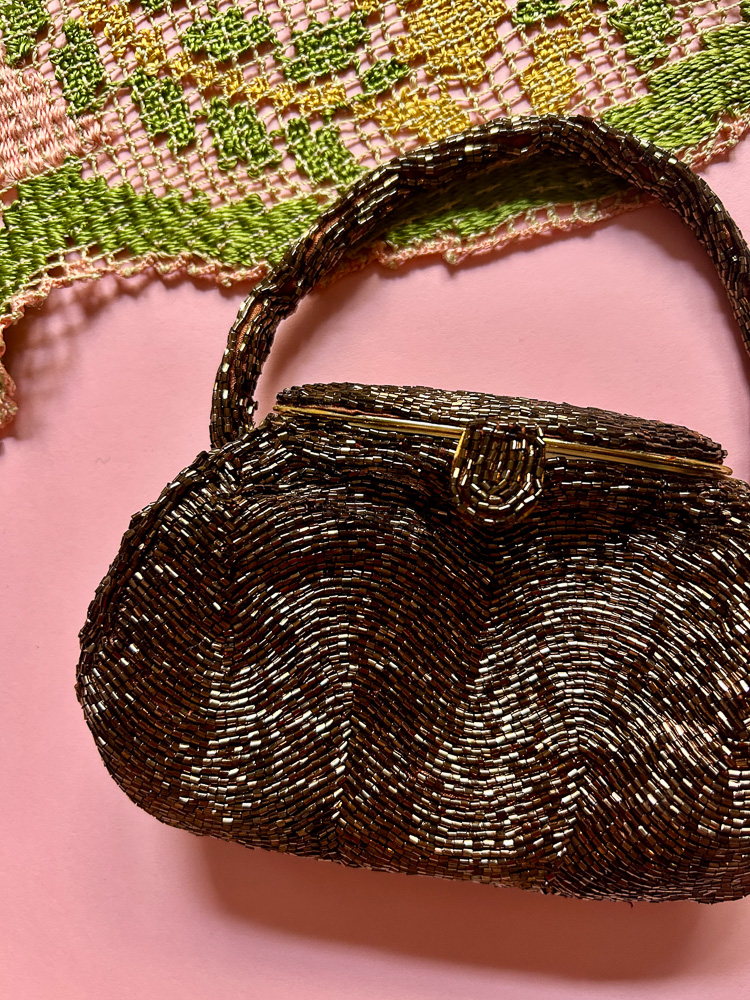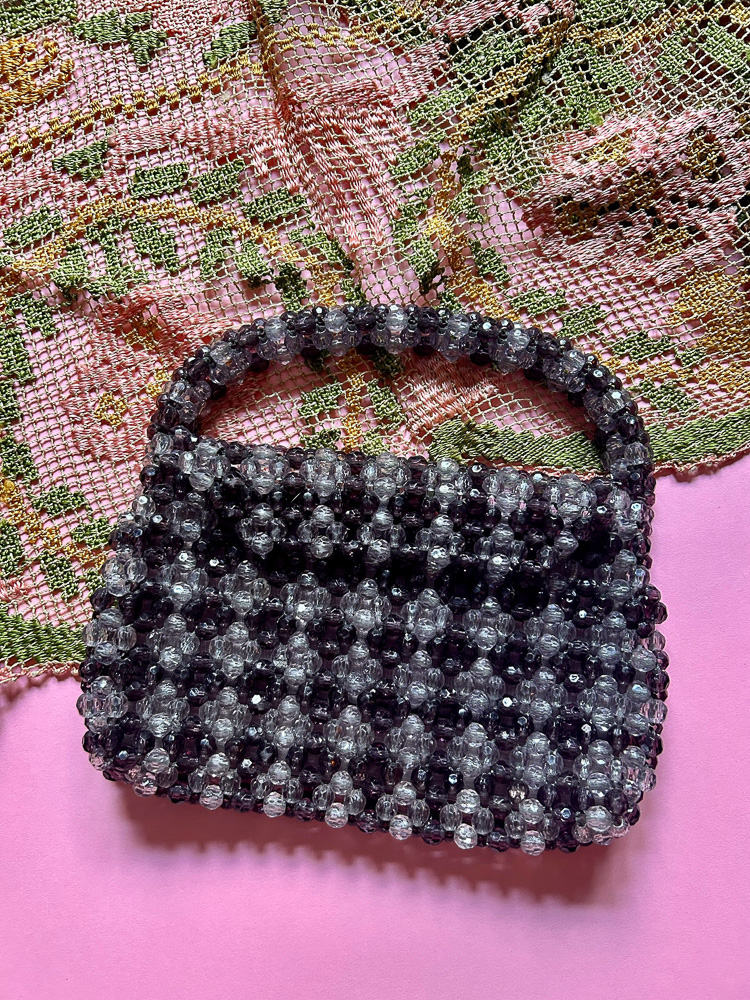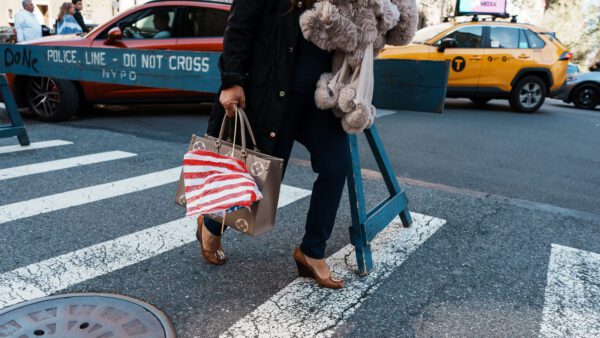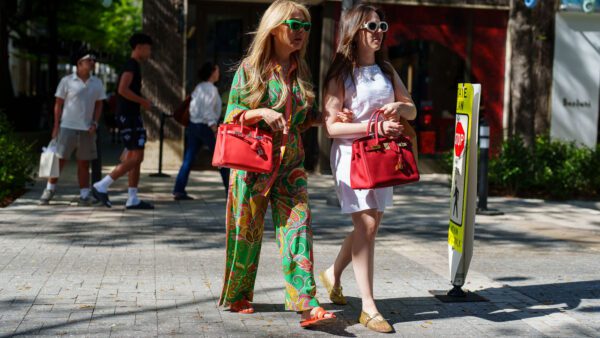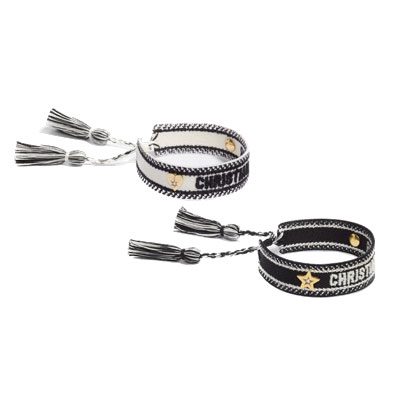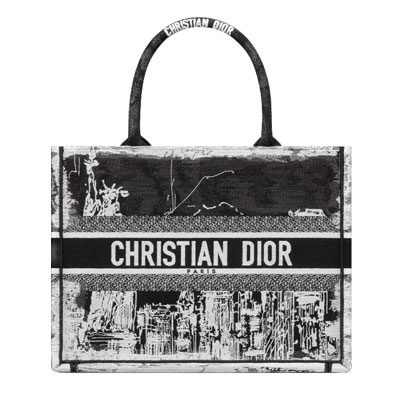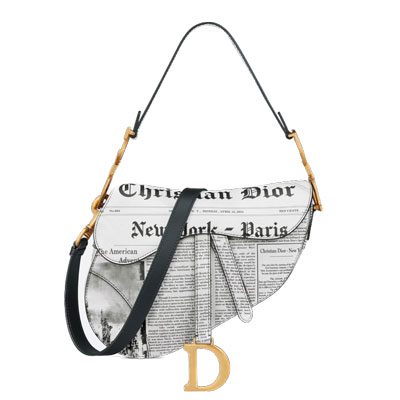Whether slung from the back of your chair or dangling from your fingertips on the dancefloor, few accessories are as eye-catching as the beaded bag. Its shimmering allure has kept it popular for hundreds of years, with reference to a beaded leather purse even appearing as far back as The Canterbury Tales.
Few other styles have stood the test of time in the same way, a true testament to the mesmerizing appeal of the humble bead. And while there’s something truly special about an original vintage bag, many of the most beautiful old evening bags come with one big caveat: they can’t fit your phone!
Contemporary designers have updated classic styles with linings, zipper pockets, and long straps, bringing an antique favorite into the modern age. Whether you’re hunting for real-deal pieces or something a bit newer, a walk through the ages may bring you to just the thing.
The Early Years (1900’s-1930’s)
The bags of the early 20th century were quite small, as women weren’t carrying around much more than makeup, a handkerchief, and a mirror. Bolder women may have had a little bit of money or a few cigarettes.
Older styles often feature very soft, delicate designs like flowers or pastoral scenes. At the same time, the bags from the 20s and 30s began to incorporate bolder art Deco looks and detailing like beaded fringe. The beaded bags from this time were delicately woven with hundreds or thousands of glass beads attached to metal frames, making them quite heavy for their tiny size.
These early beaded bags were typically unlined, with the beading woven into the structure of the bag itself instead of added as embroidery later. The bags’ metal frames were ornately decorated, with the most luxurious designs featuring frames adorned with gemstones, more beads, and filigree clasps.
Throughout the late 19th and early 20th century, most beaded bags were being made by European artisans. France and Austria were some of the most popular early exporters, with some American manufacturers joining in around the 1910s.
Most evening bags at the time were either pochettes or dainty bags with short-chain straps, which meant they were either carried by hand or worn hanging from a wrist or forearm. Evening bags were meant to be worn like jewelry, carried in a way that they could be shown off and admired.
GET THE LOOK



The Post WWII Era (1950’s-1960’s)
Following the war’s rations and restrictions, purses’ popularity went right back up alongside the rest of the American economy. The intricate glass bead designs of earlier decades remained on trend, with the envelope-shaped clutch taking center stage.
Around the 1940s, the production and export of beaded bags began to expand throughout parts of Asia. Many beaded bags in the 1950s and 60s were made by specialty shops in Hong Kong and Japan. While plastics like Bakelite and Lucite had been around for several decades, plastic beaded bags first gained popularity in the 1950s and 60s.
Faceted acrylic beads were much bigger and lighter than glass, lending themselves to a bolder, less delicate look without skimping on the sparkle. The use of plastic also allowed manufacturers to embellish bags with beads that looked like pearls, offering a glamorous look at a fraction of the cost and bulk of real pearls or glass imitations.
Unlike styles from previous decades, these new plastic beaded bags were often larger and included more components. These mid-century styles are typically fully lined with zipper closures, flap tops, and inner pockets.
GET THE LOOK


The Later Years (1970’s-1990’s)
Natural, earthy textures like leather and straw were in high demand throughout the late 60s and 70s, and many designers were making bags out of materials like wooden beads and shells. As the bohemian look then made way for the glamorous days of disco, fashion saw a resurgence of vintage styles in the form of shiny metal mesh and glittering glass beads.
Moving towards the new millennium, seemingly every existing style of purse was making a contemporary comeback. Beads of all kinds made appearances on bags in a new variety of shapes and styles, truly opening up the world of the beaded bag to just about everyone.
The beaded bags of the 1980s were often brightly colored, incorporating more embellishment than ever in the form of sequins and baubles. The 1990s introduced kitschier styles, with designers using beads to create scenes and illustrations of everything from coffee cups to puppies.
GET THE LOOK

